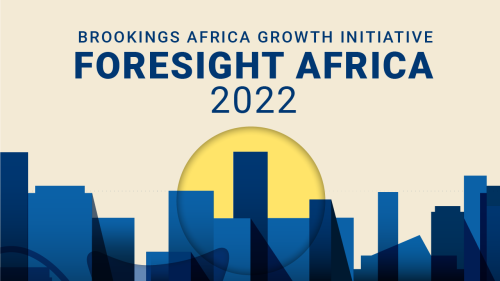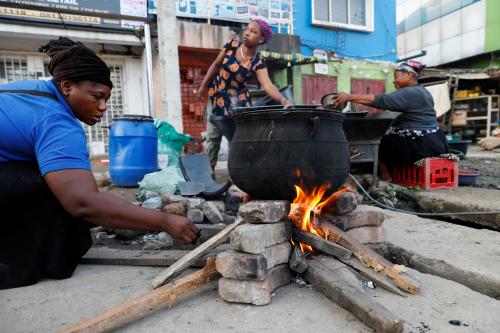As the world celebrated World Water Day earlier this week, policymakers and development professionals reflected upon the obstacles inhibiting progress in improving water, sanitation, and hygiene (WASH) around the world—and especially in Africa.
Figure 1 below from the Mo Ibrahim Foundation report “COVID-19 in Africa one year on: Impact and prospects” illustrates the lack of access to water and sanitation services in sub-Saharan Africa, especially in hospitals. More than twice as many hospitals in sub-Saharan Africa, as compared with the world average, lack access to sufficient water services and essential sanitation services. In fact, about 6 percent of hospitals in the region report severe challenges to water service. Similarly, 19 percent report major challenges to sanitation services. However, the hospitals in sub-Saharan Africa have better access to hygiene services than the world average.
Figure 1. Sub-Saharan Africa lags behind the world in water and sanitation services in hospitals
 Source: “COVID-19 in Africa one year on: Impact and prospects.” Mo Ibrahim Foundation, 2021.
Source: “COVID-19 in Africa one year on: Impact and prospects.” Mo Ibrahim Foundation, 2021.
Notably, when it comes to perceptions of general government WASH service delivery, opinions differ widely by country. In Figure 2 below from the public health chapter of Foresight Africa 2022, sub-Saharan Africans rank their countries’ performance in providing basic health, water, and sanitation services very differently. For example, only about 20 percent of respondents in Angola and Sierra Leone agreed that the government performs fairly or very well in providing water and sanitation services. In Tanzania about 60 percent of respondents found their government to be performing positively, and in Senegal, about 35 percent.
Similarly, on the question of how well the government provides basic health services, in Figure 2, Tanzania’s response was the highest: About 75 percent of respondents ranked their country as performing well or very well—twice that of Senegal and almost three times that of Angola and Sierra Leone.
Figure 2. How well does the government provide …?
 Source: Ordu, A., & Golubski, C. (Eds.). (2022). “Foresight Africa: Top priorities for the continent in 2022.” Washington, D.C.: Brookings Institution.
Source: Ordu, A., & Golubski, C. (Eds.). (2022). “Foresight Africa: Top priorities for the continent in 2022.” Washington, D.C.: Brookings Institution.
The Brookings Institution is committed to quality, independence, and impact.
We are supported by a diverse array of funders. In line with our values and policies, each Brookings publication represents the sole views of its author(s).







Commentary
Figure of the week: Access to water, sanitation, and hygiene (WASH) services in sub-Saharan Africa
March 25, 2022